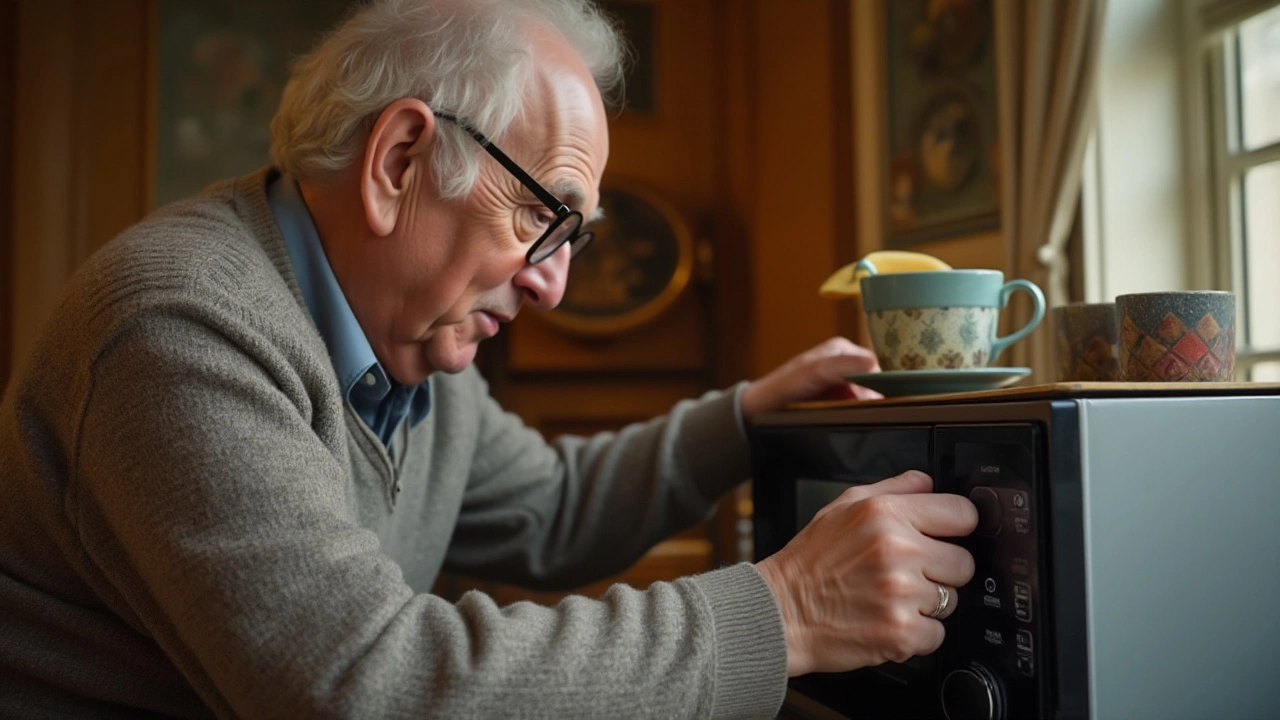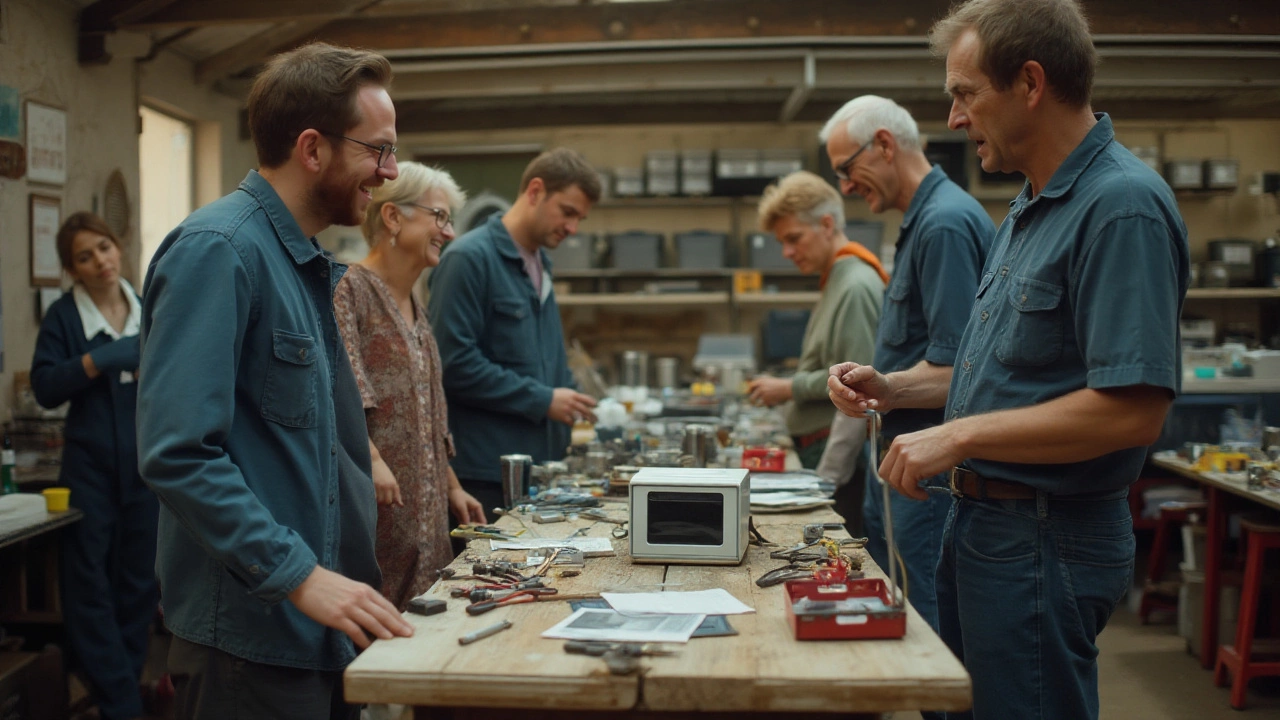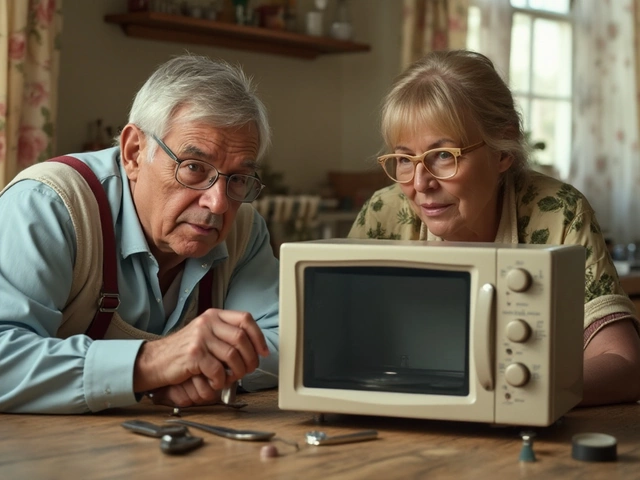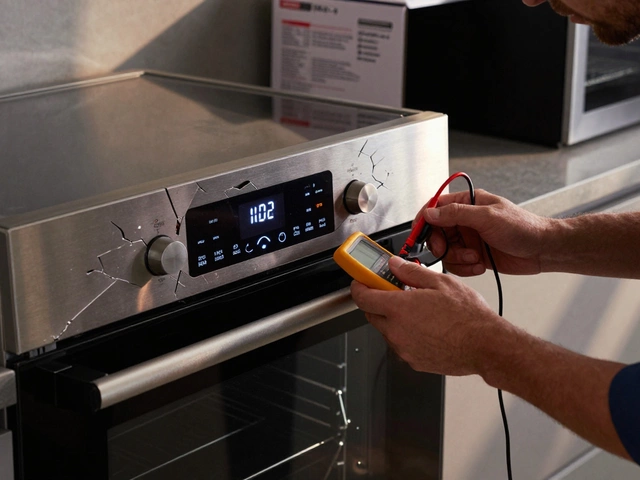Microwaves are a staple in many of our kitchens, helping us heat and cook with ease. But what happens when your trusty device starts acting up? The idea of a malfunctioning microwave can be daunting, but not every glitch requires a call to the repairman.
Understanding some basic issues and taking a few safety precautions can enable you to perform small repairs effectively. While modern appliances may seem complicated, many common problems have simple solutions that you can tackle yourself.
In this article, I will guide you through the process of identifying common microwave malfunctions and provide practical steps you can take to address them. Whether it's the turntable not spinning or the microwave not heating, knowing what to look for and how to test it makes a world of difference.
- Understanding Common Microwave Problems
- Safety Precautions Before Starting
- Step-by-Step Troubleshooting Guide
- When to Call a Professional
Understanding Common Microwave Problems
Getting to grips with what goes wrong with microwaves can save time, money, and hassle. Microwaves are ingenious inventions, reliably transforming cold leftovers into hot, appetizing meals. But their simplicity masks a web of complexities under the hood. Understanding common problems that affect microwave repair is crucial, especially if you aim to handle some of them without professional help. One frequent issue is when the microwave simply doesn't heat the food. Surprisingly, this is often because of a faulty door switch mechanism. Microwaves won't function if the door isn't properly closed or if the sensor doesn't detect closure, acting as a safety mechanism.
The microwave’s turntable, which distributes heat evenly by rotating your food, might stop spinning. Check if it's properly seated on the guiding ring - sometimes, it's a wayward disturbance causing the issue rather than a mechanical fault. On the rare occasion it is mechanical, examining the motor at the base for any obstructions can effectively pinpoint the issue. Another common problem is the presence of strange noises. Although unsettling, these auditory anomalies are often not as serious as they parlay, usually caused by misaligned plates or food debris stuck in the workings.
Moreover, it's critical to consider the integrity of your microwave's keypad. Command inputs that go unrecognized or buttons refusing to press could indicate a need for re-calibration or cleaning beneath the surface. Many users face confusion with power fluctuations, where the microwave operates intermittently or fluctuates in strength. This can be traced back to issues with internal wiring or the control board. Regular maintenance can mitigate many of these DIY microwave fix challenges, extending the lifespan of your appliance considerably.
Maintaining appliances in good working order is key to sustainability. "By understanding the common faults and needs of your household appliances, you're not only saving costs on repairs but also minimizing electronic waste," John Miller, an Appliance Repair Expert, stated.
An interesting statistic reveals that about 70% of microwave issues reported are easily solvable by the user themselves, leveraging basic troubleshooting skills. When you comprehend these problems correctly and approach them logically, the path to elicit fixes becomes straightforward. Regardless of the problem's nature, knowing how your microwave works and what could go awry with each component can turn potentially daunting malfunctions into mere minor setbacks.

Safety Precautions Before Starting
Before you dive into fixing your microwave, it is crucial to underline the significance of safety. Microwaves are electrical devices that carry high voltage, even when unplugged. This means you must be cautious and prepared. Start by ensuring the microwave is completely unplugged. This may seem obvious, but it's a critical step you should never overlook. Many components in a microwave, like the capacitor, can retain power even after the microwave is shut off. The capacitor stores electricity and is potentially lethal, so make sure you discharge it properly using a screwdriver with an insulated handle to bridge the terminals.
It is equally important to have a reliable set of tools at your disposal. This includes screwdrivers, multimeters for testing electrical continuity, and a pair of insulated rubber gloves for your protection. Make certain you're working in a well-lit area where you can clearly see what you're doing. Cleaning your workspace of clutter can prevent accidents, keeping parts and tools organized. While working on your microwave, avoid using metal tools directly inside it as the metal can easily cause a short circuit or attract residual electricity, leading to a nasty shock. Wear clothing without hanging accessories, as loose fabric can catch on components unexpectedly.
To know what you're dealing with, refer to the microwave's manual. This document can often be found in one of your kitchen's many throwaway drawers. It offers critical specifications and instructions for disassembly, which vary from model to model. Some manufacturers also provide online resources or customer service hotlines to consult before you tear into your device. And if anything seems out of your depth, remember that help from a professional is just a phone call away. DIY microwave repair is not just about saving money—it's knowing when you need a hand.
"The fundamental safety issue with microwave ovens is the potential for electric shock. High voltage capacitors can retain a charge, capable of shocking well after unplugged. So safety is paramount." - Advanced Appliance Solutions
Never underestimate the power of a checklist. Write down the steps and observations you make along the way, jotting down the issue, probable causes, and fixes to explore. This habit not only ensures organization but provides a record if the problem recurs. You might be reluctant to go old school, but paper and pen are safer in this instance than putting your phone too close to an operational microwave's innards. Finally, if you're ever uncertain or hesitant, your best bet is hitting pause on the repair—the risks of a rushed, unsafe fix far outweigh the rewards.

Step-by-Step Troubleshooting Guide
The journey to restoring your microwave's functionality begins with a calm and methodical approach. Before diving into repairs, ensure your microwave is unplugged to avoid any electrical mishaps—safety should always be a priority. Many microwaves face common issues like not heating, not turning on, or producing unusual noises. Each problem typically has a logical cause, and with some keen observation and simple tools, you can diagnose it effectively. To start, it's useful to have a multimeter and some basic screwdrivers on hand. These will aid in testing components and accessing internal parts.
Begin by examining the most apparent issue. If your microwave isn't heating but everything seems to work, the culprit could be the high voltage diode or the magnetron. These components take the usual 120 volts from your outlet and convert it into the high voltage that warms food. Testing the high voltage diode can be tricky, but using a multimeter will help determine if it's faulty. Ensure you have a clear understanding of handling high-voltage components safely, as they can store dangerous charges even when unplugged.
For issues with the microwave not turning on at all, inspect the door switches first. These are safety features that ensure the microwave only runs when the door is securely closed. Over time, these switches can wear out or get misaligned, causing the microwave to stay off. Examine the latch and the switches themselves by removing the microwave's casing. Ensure the switches click when pressed; a replacement might be necessary if they're unresponsive. A few turns of the screwdriver and handling the connectors with care should do the trick.
If your microwave is making unusual sounds, consider the fan or turntable motor. Listen for where the noise is coming from, as these components tend to wear out over time. Removing debris buildup or realigning components might resolve the issue. In some cases, replacing the motor could be necessary. But before rushing to that conclusion, check for any loose screws or foreign objects inside that might be causing rattles.
According to the Home Appliance Digest, "Regular maintenance can prolong the life of your microwave and prevent many common problems. Cleaning and ensuring parts are tight and well-fitted goes a long way."
Here's a concise way to address these microwave ailments:
- Identify the issue: Listen and observe your microwave's behavior carefully.
- Inspect visually: Check for obvious wear or damage, especially around moving parts.
- Test with tools: Use a multimeter to ascertain the continuity of electrical components.
- Replace as needed: If a part fails testing, finding replacements is generally straightforward with a repair manual or part number.
- Monitor after repair: Once fixed, use the microwave under supervision to ensure the issue is resolved.
While some may find the idea of repairing an appliance daunting, tackling DIY microwave repair not only empowers you with new skills but also benefits your wallet. The knowledge gained can be invaluable, especially when it saves you from unnecessary expenses and offers a gratifying experience of self-reliance. Remember, if any step feels beyond your comfort level, there’s no shame in consulting a professional to keep safety at the forefront.

When to Call a Professional
While there are plenty of minor microwave issues you can tackle yourself, there are specific situations where it's wise to put down the screwdriver and dial up a professional. Knowing when to call a certified repair expert can save you from inadvertently making the problem worse or even risking your safety. Microwaves, by their nature, deal with high voltage and intricate electrical components, making some issues beyond the DIY scope. Attempting to fix components like the magnetron without the right expertise might not only be dangerous but could also lead to greater damage to the appliance.
One cardinal rule when it comes to microwave repair is recognizing the warning signs that require professional intervention. If your microwave emits a burning smell, it often signifies a potentially serious electrical issue. The danger here isn't just limited to the microwave; it could pose a fire hazard that affects your entire kitchen or home. Similarly, strange and loud noises that occur when the microwave is in operation could suggest a broken high-voltage diode or a failing transformer. These components require specialized tools and expertise, and tampering with them could void warranties or, worse, compromise your safety. DIY microwave fix should always have these boundaries and not include these intricate components.
According to the Appliance Repair Conference, "more than 20% of all microwave repairs should be handled by professionals, mainly due to the safety concerns and the complexity of parts involved."
Another clear indicator for needing professional help is when the microwave door fails to latch or fasten correctly. The door seals are essential as they prevent radiation leakage. A faulty door mechanism might seem like a minor inconvenience, but it could actually expose you to microwave radiation over time. Proper latching is crucial, and repairing it may require specialized alignment and parts that only a trained technician can guarantee safely and effectively. For issues involving the control board, such as unresponsive buttons or erratic behavior, a professional should assess these complexities. Sensors and control boards are integral to the appliance's operation, and attempting to replace or recalibrate them without precise knowledge could lead to further malfunctions or safety hazards.
A useful tip: if your microwave repair costs start to add up or exceed the half-price mark of a new unit, consider getting a replacement instead. Newer models come with advanced technology that might better meet your needs and offer enhanced safety features. Reviewing your appliance's age is a vital aspect of this decision-making process. Most microwaves have an average lifespan of 7 to 10 years, depending on use and maintenance. Therefore, if your microwave nears or surpasses this range and experiences significant problems, professional advice could help you determine whether repairs or an upgrade would be more cost-effective. Remember, seeking the assistance of someone with expertise not only preserves your microwave’s functionality but also ensures safety, which is invaluable.









